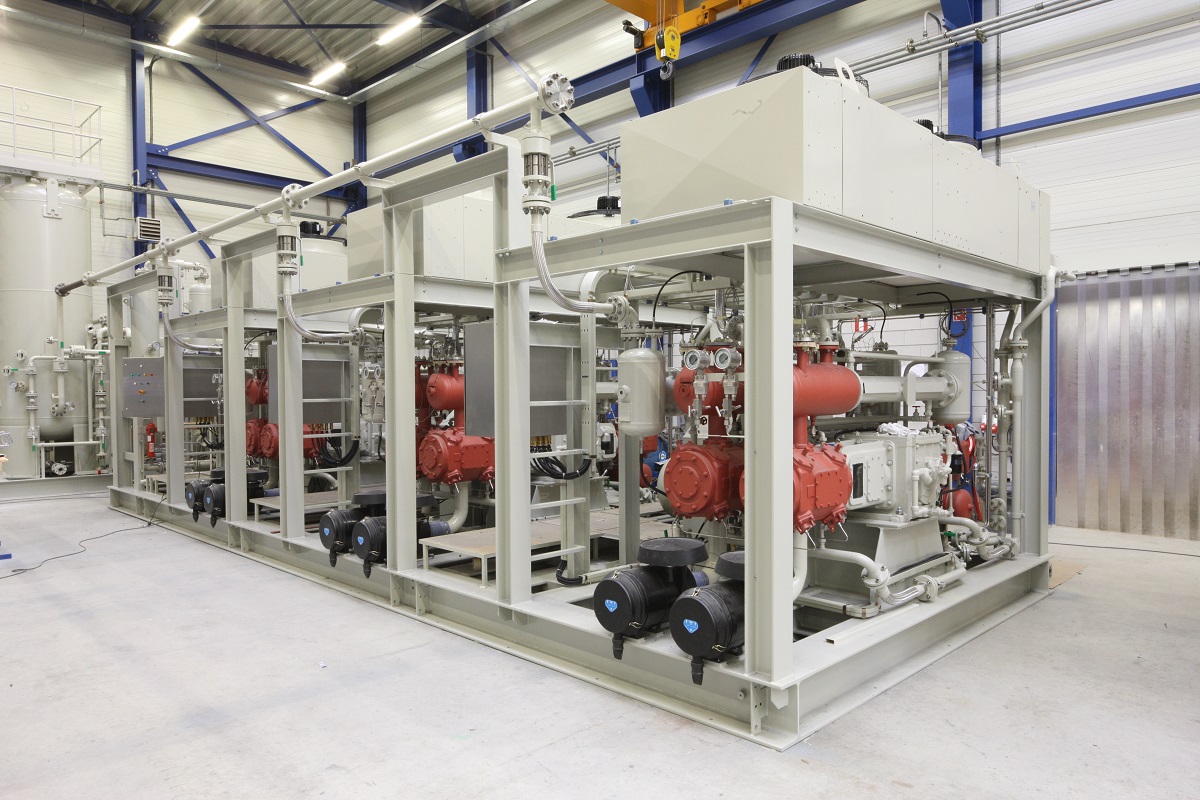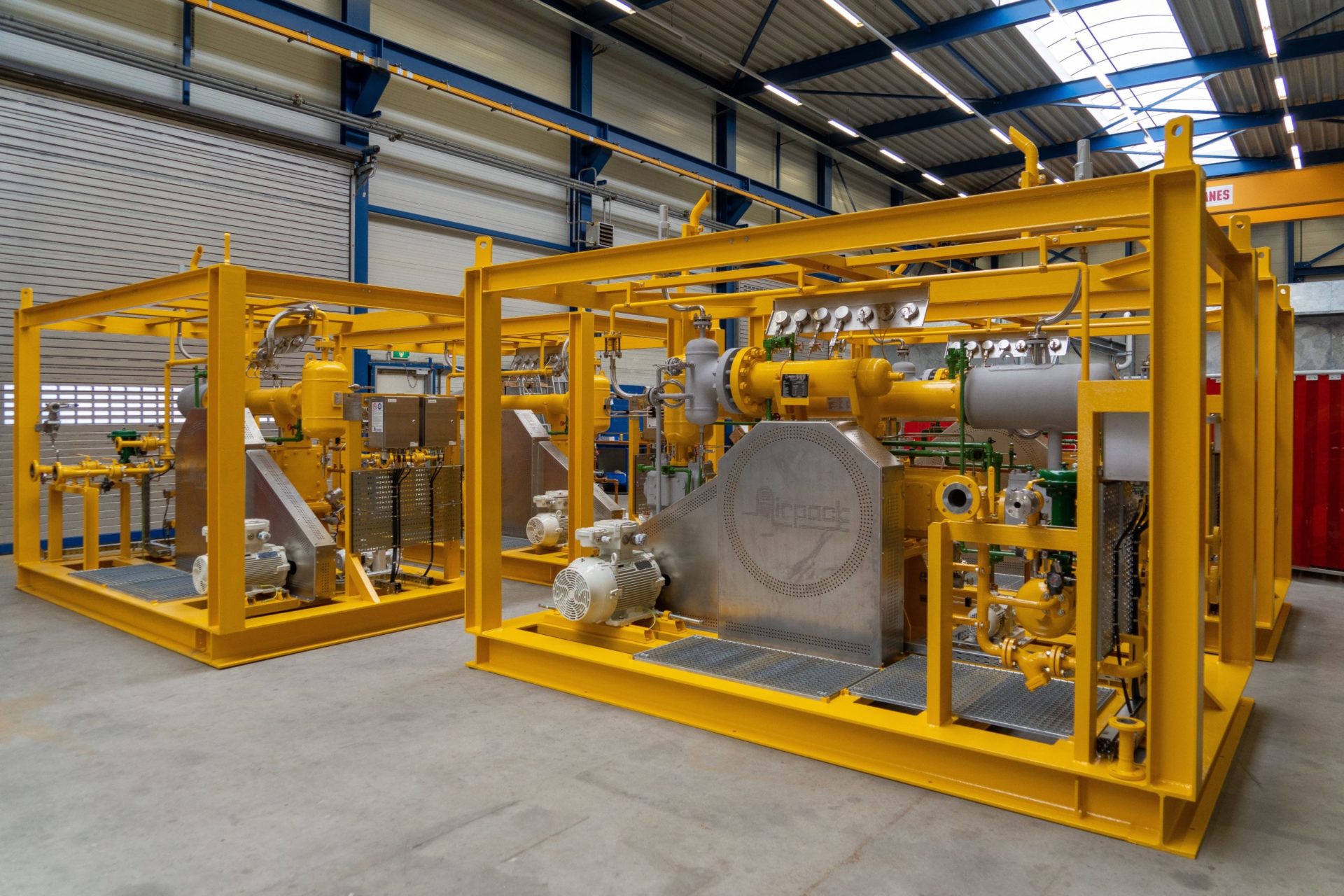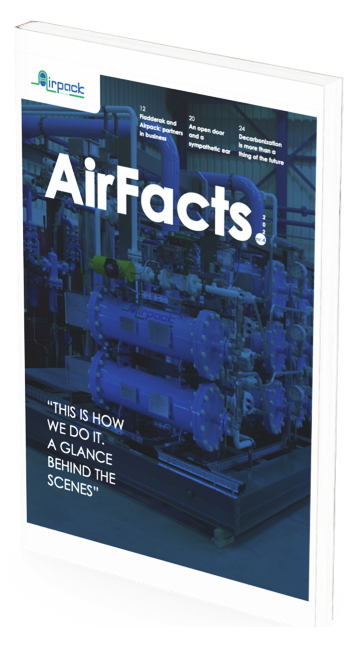COMPRESSORS
As any family that relocates knows, people accumulate a plethora of stuff over the years. In response, they might hold a yard sale prior to the move in order to reduce the size of its transportable freight. In addition, they might rent a dumpster to dispose of the junk. These measures make the move easier and less expensive. The same principle applies in the conveyance of energy sources -- petroleum, natural gas and biogas, e.g. -- in that pipeline transport works best when volume is minimized and contaminants are removed. This is why compression is central to energy source processing.
Why Is Compression Necessary?
Compression involves diminishing the volume of -- while increasing the pressure on -- a gaseous fluid. In other words, this activity squeezes gaseous molecules. There are several reasons that energy companies utilize compression. For one thing, pipelines through which gas moves can facilitate a stronger flow rate when compression is applied. Moreover, processing and storage vessels need not be so large with compressed gas as they would otherwise. A third reason relates to the actual extraction point: compression at the wellhead can yield higher amounts of oil, for instance. From recovery to delivery, then, compressors are essential to getting energy to users.
How Does Compression Work?
The stated aim of compression is to reduce the gas volume to one percent of what it would be under standard atmospheric pressure. In fact, how much compression is executed depends its purpose at any given phase of processing or transport. Typically, a compressor package is multi-chambered, with a membrane in each compartment. The membrane is the operative component that condenses the volume. Gas flows into the initial chamber -- condensed by pressure continuously -- until the enclosure is filled to capacity. From there, the gas is pumped into a chamber of smaller dimensions where membrane pressure is again applied. This sequence is continued until the desired pressure is achieved. Of course, there are many variations in the gas compressor package.
Conveying natural gas, for instance, from the well site to the points of purchase is the primary purpose of pipelines. Compressors are methodically located along the pipeline course. Pennsylvania State University extension scientists explain the motive: "As natural gas moves through a pipeline, distance, friction, and elevation differences slow the movement of the gas, and reduce pressure. Compressor stations are placed strategically within the gathering and transportation pipeline network to help maintain the pressure and flow of gas to market." Some compressors are better suited for this kind of regulation than others. This is why the cng compressor package is not simply one size fits all.
The Variety of Compressors
Reciprocating Compressor
Sometimes called piston compressors, reciprocating compressors utilize the corresponding action of pistons to pressurize gas within a cylinder. From the cylinder, the gas flows into a recepticle where it is held under high pressure. Sometimes the cylinder and receiving tank are efficiently mounted to one frame in order to condense air. This is known as an air compressor skid package. Single acting compressors of this kind impose a pressure of 90 to 110 pounds per square inch. Double acting compressors can apply pressure in excess of that range.
Screw Compressor
Like teeth of a zipper, the rotors of the screw compressor mesh together to crunch gaseous molecules after pulling them in at the drive end of the compressor. In brief, the gas flows along the length of this "zipper" and is then expelled through a discharge port. Screw compressors make less noise than other air compressor packages because they vibrate less and are more compact.
Booster Compressor
Most booster compressors are pneumatic, i.e. utilizing air for power, but they can operate on other sources as well. They are called upon when pressure above psi is needed. Indeed, booster compressors can lift pressure up to 600 psi. In many industrial settings, this type of pressurizer is used for short-term surges in pressure. While sustained usage is occasionally practiced, the booster compressor can be a costly power consumer. That said, they are efficient supplements to existing compression utilities when necessary and are also used as diagnostic tools for pressurized lifts, for instance, or printing presses.
Centrifugal Compressor
Another instrument air package includes the centrifugal compressor. Centrifugal compression employs impellers -- as one might see in more recent models of clothes washers -- to accelerate the gas flow, flinging the gas outward thereby increasing the pressure. When the flow speed decreases, pressure on the gas rises. Flow rates can be high while maintenance is minimal.
There are several other designs of air compressor and dryer packages. Air dryers remove the moisture, in the form of vapor and aerosol, from the works. This helps to prevent damage and corrosive activity in the valves and the pipes.
In Summary
Compression is essential to the conveyance, use, and storage of natural and other gases. By reducing gaseous volumes, processors and distributors can transport and reserve energy contents more efficiently. There are myriad designs for compressor technology, and each is useful for various and sundry purposes. Factors include volume of gas going in; what gaseous medium is being processed; and where the end-users are.




